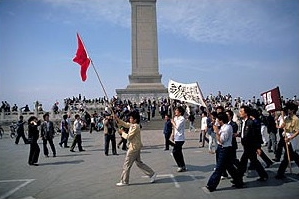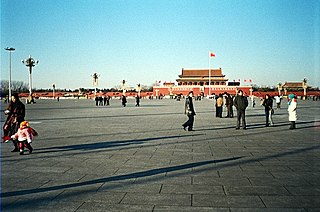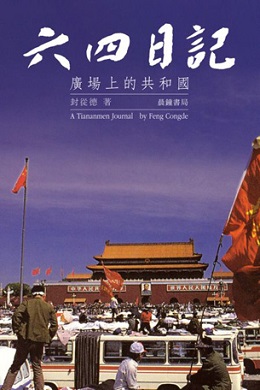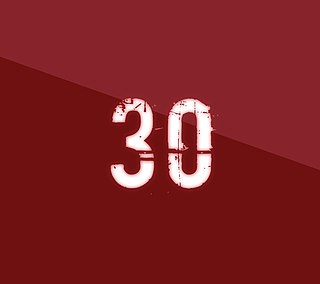
The Tiananmen Square protests, known in Chinese as the June Fourth Incident were student-led demonstrations held in Tiananmen Square, Beijing, China, lasting from 15 April to 4 June, 1989. On the night of 3 June, after weeks of attempts to resolve the conflict peacefully, including negotiations from both sides, the Chinese government declared martial law, and deployed troops to occupy the Square in what is often referred to as the Tiananmen Square massacre. The events are sometimes called the '89 Democracy Movement, the Tiananmen Square Incident, or the Tiananmen uprising.

The Tiananmen Incident or the April 5 Tiananmen Incident was a mass gathering and protest that took place on April 4–5, 1976, at Tiananmen Square in Beijing, China. The incident occurred on the traditional day of mourning, the Qingming Festival, after the Nanjing Incident, and was triggered by the death of Premier Zhou Enlai earlier that year. Some people strongly disapproved of the removal of the displays of mourning, and began gathering in the Square to protest against the central authorities, then largely under the auspices of the Gang of Four, who ordered the Square to be cleared.

The Goddess of Democracy, also known as the Goddess of Democracy and Freedom, the Spirit of Democracy, and the Goddess of Liberty, was a 10-metre-tall (33 ft) statue created during the 1989 Tiananmen Square protests. The statue was constructed over four days out of foam and papier-mâché over a metal armature and was unveiled and erected on Tiananmen Square on May 30, 1989. The constructors decided to make the statue as large as possible to try to dissuade the government from dismantling it: the government would either have to destroy the statue—an action which would potentially fuel further criticism of its policies—or leave it standing. Nevertheless, the statue was destroyed on June 4, 1989, by soldiers clearing the protesters from Tiananmen square. Since its destruction, numerous replicas and memorials have been erected around the world, including in Hong Kong, San Francisco, Washington, D.C., and Vancouver.

The Tiananmen, or Gate of Heavenly Peace, is the main entrance to the Imperial Palace Grounds in Beijing.

The Gate of Heavenly Peace is a 1995 documentary film, produced by Richard Gordon and Carma Hinton, about the Tiananmen Square protests of 1989.
The Tank Man may refer to:

Tiananmen Square or Tian'anmen Square is a city square in the city center of Beijing, China, named after the eponymous Tiananmen located to its north, which separates it from the Forbidden City. The square contains the Monument to the People's Heroes, the Great Hall of the People, the National Museum of China, and the Mausoleum of Mao Zedong. Mao Zedong proclaimed the founding of the People's Republic of China in the square on October 1, 1949; the anniversary of this event is still observed there. The size of Tiananmen Square is 765 x 282 meters. It has great cultural significance as it was the site of several important events in Chinese history.

The 20th anniversary of the 1989 Tiananmen Square protests and massacre (20周年六四遊行) was a series of rallies that took place in late May to early June 2009 to commemorate the 20th anniversary of the 1989 Tiananmen Square protests and massacre, during which the Chinese government sent troops to suppress the pro-democracy movement. While the anniversary is remembered around the world; the event is heavily censored on Chinese soil, particularly in Mainland China. Events which mark it only take place in Hong Kong, and in Macao to a much lesser extent.
Moving the Mountain is a 1994 feature documentary directed by Michael Apted and produced by Trudie Styler, with cinematography by Maryse Alberti and music by Liu Sola.

The 21st anniversary of the 1989 Tiananmen Square protests and massacre began as a small march to commemorate the 1989 Tiananmen Square protests and massacre in Hong Kong. Hong Kong and Macau are the only places on Chinese soil where the 1989 crushing of China's pro-democracy movement can be commemorated, and the annual event to commemorate has been taking place in Hong Kong since 1990.

During the 1989 Tiananmen Square protests and massacre in Beijing, the Chinese People's Liberation Army (PLA) played a decisive role in enforcing martial law, using force to suppress the demonstrations in the city. The killings in Beijing continue to taint the legacies of the party elders, led by Chinese leader Deng Xiaoping, and weigh on the generation of leaders whose careers advanced as their more moderate colleagues were purged or sidelined at the time. Within China, the role of the military in 1989 remains a subject of private discussion within the ranks of the party leadership and PLA.
The 1989 Tiananmen Square protests and massacre were the first of their type shown in detail on Western television. The Chinese government's response was denounced, particularly by Western governments and media. Criticism came from both Western and Eastern Europe, North America, Australia and some east Asian and Latin American countries. Notably, many Asian countries remained silent throughout the protests; the government of India responded to the massacre by ordering the state television to pare down the coverage to the barest minimum, so as not to jeopardize a thawing in relations with China, and to offer political empathy for the events. North Korea, Cuba, Czechoslovakia, and East Germany, among others, supported the Chinese government and denounced the protests. Overseas Chinese students demonstrated in many cities in Europe, America, the Middle East, and Asia against the Chinese government.
Charlie Cole may refer to:
The 24th anniversary of Tiananmen Square protests of 1989 took place in China and internationally around 4 June 2013. The protests commemorated victims of the Chinese Communist Party crackdown on the Tiananmen Square protests of 1989. Activities included the state of alert within mainland China, and the traditional marches and candlelight vigils that took place in Hong Kong and Macau on 4 June 2013 which have taken place every year prior to that since 1990. The two former colonies are the only places on Chinese soil where the 1989 crushing of China's pro-democracy movement can be commemorated.

Fang Zheng is a former student protester who was seriously injured during the 1989 Tiananmen Square protests and massacre. During the evacuation of the Square in the early morning of June 4, Fang was run over by a People’s Liberation Army tank, which led to the amputation of both his legs. He is currently the president of Chinese Democracy Education Foundation.

A Tiananmen Journal: Republic on the Square by Feng Congde (封从德) was first published in May 2009 in Hong Kong. This book records the 1989 Tiananmen Square protests and massacre from April 15, 1989, to June 4, 1989, in detail. Author Feng Congde is one of the student leader in the protest and his day-by- day diary entries, record every activity during the protest including the start of student protests in Peking University, the activities of major student leaders, important events, and unexposed stories about student organizations and their complex decision making.

The June 4th Museum, organised by the Hong Kong Alliance in Support of Patriotic Democratic Movements in China, is a museum commemorating the 1989 Tiananmen Square protests and massacre that occurred in Beijing, China.

The 30th anniversary of Tiananmen Square protests of 1989 was principally events that occurred in China and elsewhere on 4 June 2019 - to commemorate the Chinese Communist Party's crackdown on the Tiananmen Square protests of 1989 in which hundreds of people were killed.












